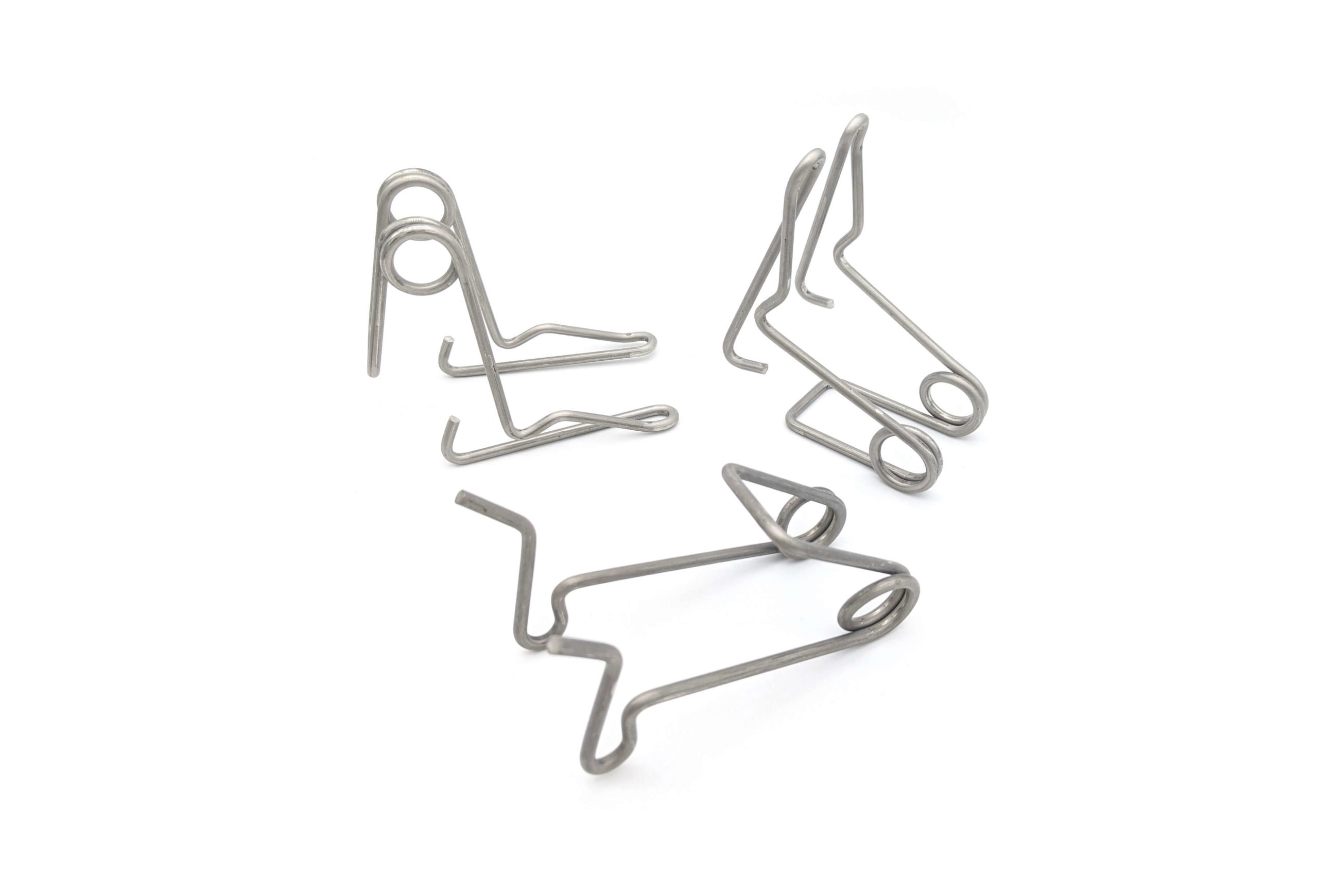Get unique, complex parts easily. No matter your requirements, Chaoyi Spring creates hard-to-produce coil springs and wire forms.
Let us help you create the custom wire form you need, from S-hooks and J-hooks to utility hooks and more.
We work closely with customers across a wide range of industries, helping them design and manufacture made-to-order parts.
Why choose Chaoyi Spring? We prioritize customer-focused collaboration, modern equipment and the latest technology to make your parts per print.
Find the information and guidance you need, from measuring a spring to learning about materials, placing an order and much more.
In the world of mechanical design, springs play a crucial role, providing elastic force and restoring components to their original position. Two common types of springs, torsion springs and tension


In the world of mechanical design, springs play a crucial role, providing elastic force and restoring components to their original position. Two common types of springs, torsion springs and tension springs, are often confused due to their similar appearance. However, they differ significantly in their function and application. This article delves into the key differences between torsion springs and tension springs, exploring their unique characteristics and applications.

A torsion spring is a coiled spring designed to store and release rotational energy. Imagine a spring you twist, like a door hinge or a spring-loaded clothespin. The spring stores energy as you twist it, and when you release it, it attempts to return to its original untwisted position. This rotational force is the defining characteristic of a torsion spring.
Torsion springs are typically made of metal wire or strip, wound into a helix or coil shape. When a force is applied to the spring, it experiences a twisting or torsional stress. The spring's ability to resist this stress is called its torsional stiffness. The higher the torsional stiffness, the more force is required to twist the spring a given amount.
Torsion springs have a wide range of applications, including:
A tension spring is a spring that stores and releases energy when stretched or extended. Think of a rubber band or a bungee cord. When you stretch a tension spring, it stores potential energy. Once released, the spring pulls back to its original unstretched state. This pulling force is the defining characteristic of a tension spring.
Tension springs are often made from coiled wire, similar to torsion springs. However, they are typically designed to be stretched rather than twisted. When a tensile force is applied to the spring, it experiences a stretching or tensile stress. The spring's ability to resist this stress is called its tensile stiffness.
Tension springs have various applications, including:
The primary difference between torsion and tension springs lies in their function and the way they store energy. Here's a table summarizing the key distinctions:
| Characteristic | Torsion Spring | Tension Spring |
|---|---|---|
| Function | Stores and releases rotational energy | Stores and releases linear energy |
| Stress Type | Torsional stress | Tensile stress |
| Motion | Twisting or rotation | Stretching or extension |
| Applications | Door hinges, clothespins, gear drives | Rubber bands, window blinds, suspension systems |
The choice between a torsion spring and a tension spring depends on the specific application and the desired motion. Consider these factors:
Consulting with a spring manufacturer or designer can help ensure you select the right spring for your application.
In conclusion, while torsion springs and tension springs share a similar appearance, their functional differences are significant. Understanding these differences is crucial for selecting the right spring for your needs. Whether you're designing a door hinge, a retractable clothesline, or any other mechanical system, choosing the appropriate spring type can enhance performance, durability, and overall functionality. By carefully considering the application's requirements and consulting with experts, you can ensure the right spring is selected for optimal results.
Browse some of the custom wire forms and springs that we manufacture. Don’t see what you need? We specialize in made-to-order products that meet your application requirements.
Visit Our GalleryNeed a custom wire form or coil spring? We make it work. Fill out the contact form and a representative will respond within 1 business day. If you have a PDF or CAD file, you can submit to request a quote.